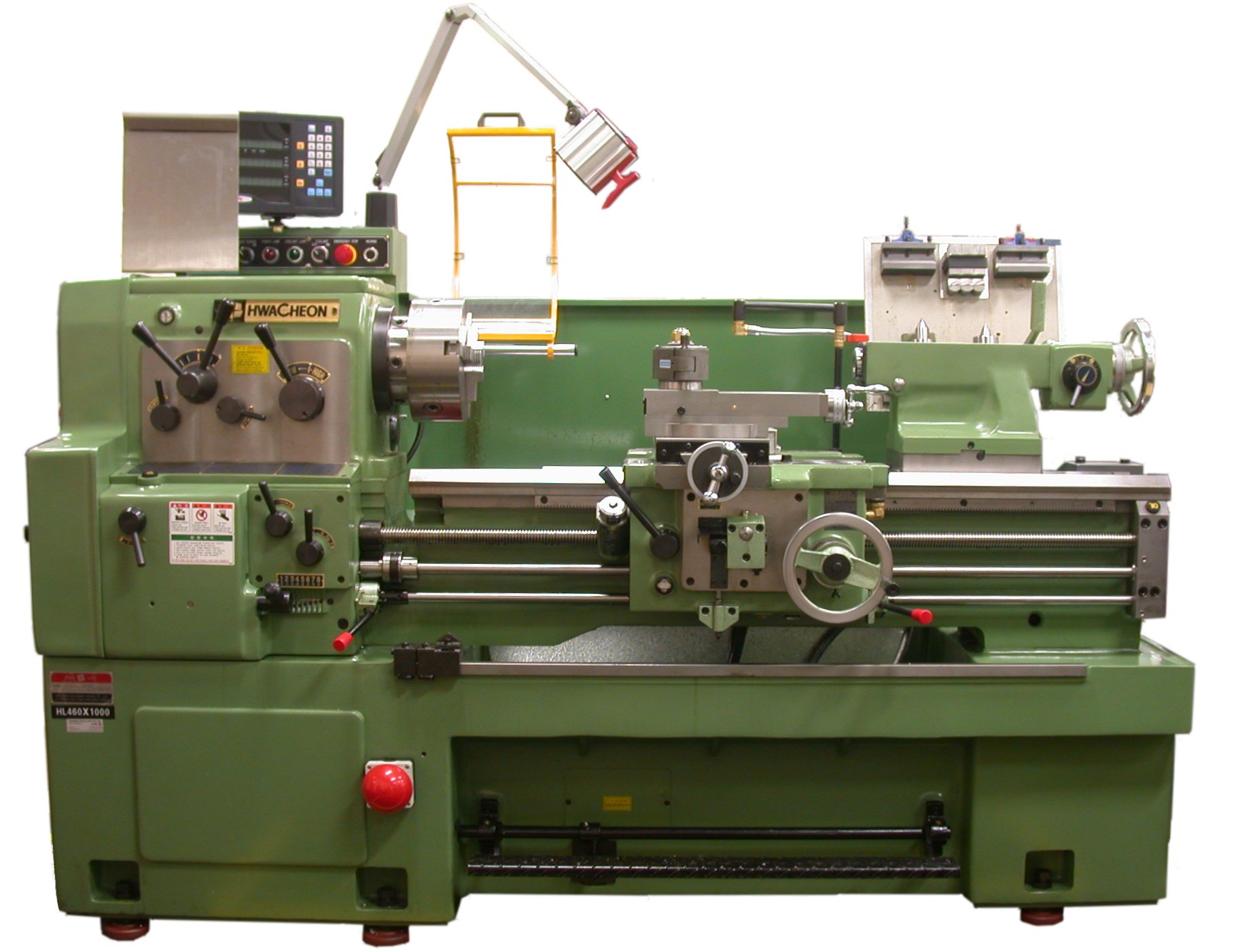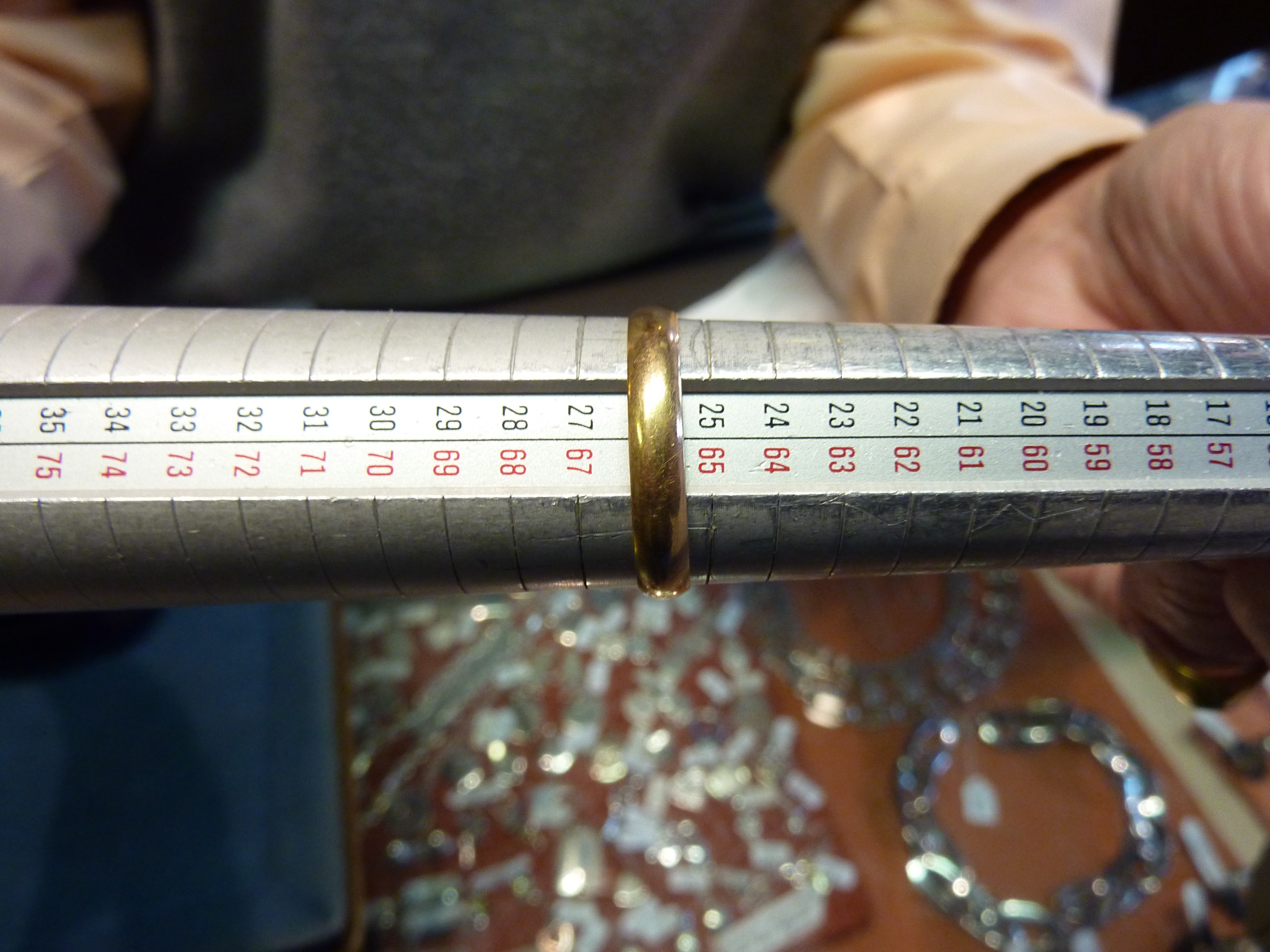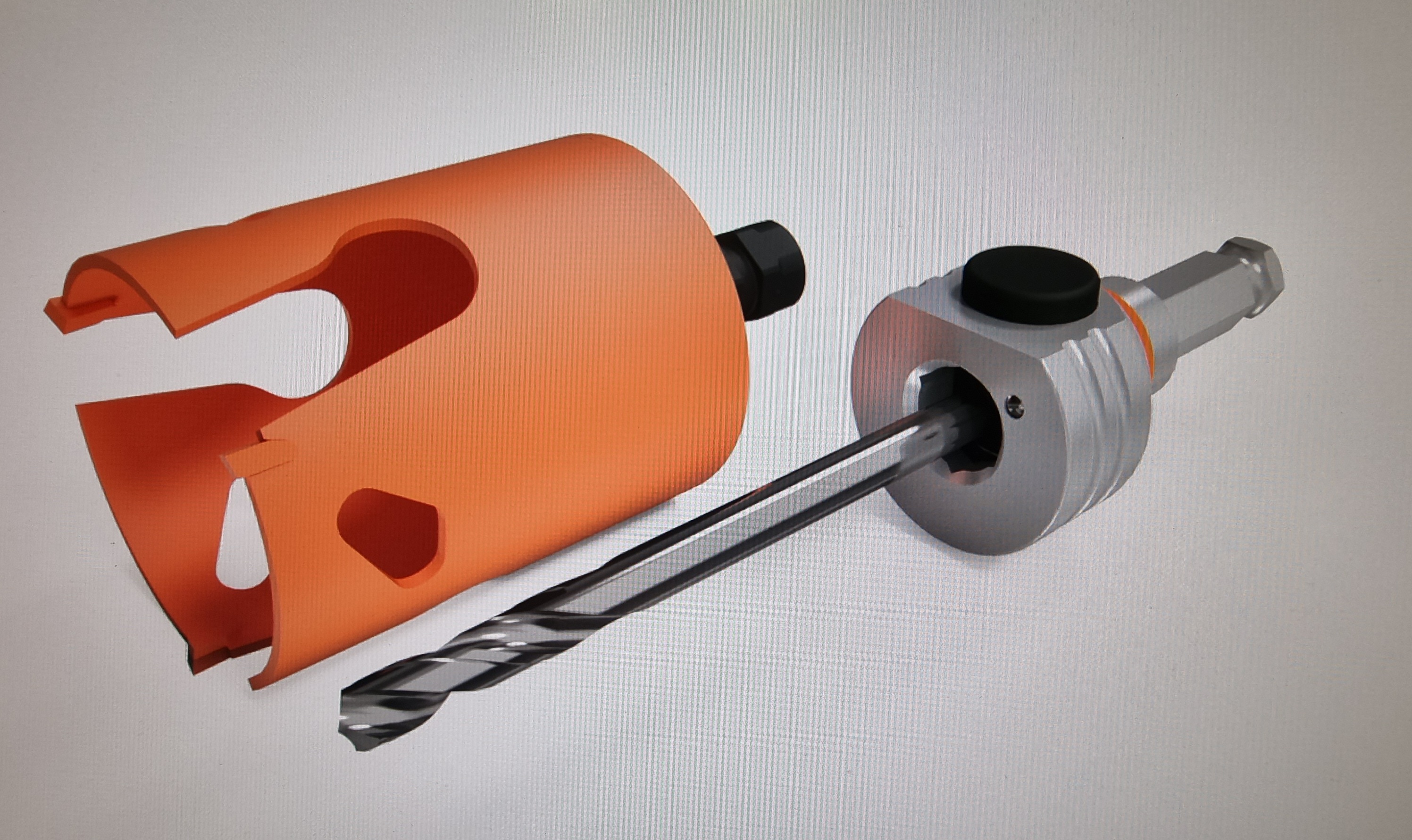|
Mandrel
A mandrel, mandril, or arbor is a tapered tool against which material can be forged, pressed, stretched or shaped (e.g., a ring mandrel - also called a triblet - used by jewellers to increase the diameter of a wedding ring), or a flanged or tapered or threaded bar that grips a workpiece to be machined in a lathe. A flanged mandrel is a parallel bar of a specific diameter with an integral flange towards one end, and threaded at the opposite end. Work is gripped between the flange and a nut on the thread. A tapered mandrel (often called a plain mandrel) has a taper of approximately 0.005 inches per foot and is designed to hold work by being driven into an accurate hole on the work, gripping the work by friction. A threaded mandrel may have a male or female thread, and work which has an opposing thread is screwed onto the mandrel. On a lathe, mandrels are commonly mounted between centres and driven by a lathe dog (typically flanged or tapered mandrels), but may also be gripped in ... [...More Info...] [...Related Items...] OR: [Wikipedia] [Google] [Baidu] |
Filament Winding
Filament winding is a fabrication technique mainly used for manufacturing open (cylinders) or closed end structures (pressure vessels or tanks). This process involves winding filaments under tension over a rotating mandrel. The mandrel rotates around the spindle (Axis 1 or X: Spindle) while a delivery eye on a carriage (Axis 2 or Y: Horizontal) traverses horizontally in line with the axis of the rotating mandrel, laying down fibers in the desired pattern or angle to the rotational axis. The most common filaments are glass or carbon and are impregnated with resin by passing through a bath as they are wound onto the mandrel. Once the mandrel is completely covered to the desired thickness, the resin is cured. Depending on the resin system and its cure characteristics, often the mandrel is autoclaved or heated in an oven or rotated under radiant heaters until the part is cured. Once the resin has cured, the mandrel is removed or extracted, leaving the hollow final product. For some pr ... [...More Info...] [...Related Items...] OR: [Wikipedia] [Google] [Baidu] |
Metal Spinning
Metal spinning, also known as spin forming or spinning or metal turning most commonly, is a metalworking process by which a disc or tube of metal is rotated at high speed and formed into an axially symmetric part. Spinning can be performed by hand or by a CNC lathe. The metal spinning trade is one that dates back to antiquity and was a skill used in the Ancient Egyptian era. This is when metal spinning was limited to soft metals spun by human power on primitive lathes. The technique gave significant advances to hydro and steam power in Europe and North America in the 19th century and by the early 20th century the electric motor provided the necessary power and high-speed turning capability. With this advancement, metal spinning craftsmen were now able to spin higher quality pieces made out of brass, copper, aluminum and even stainless and cold-rolled steel. Metal spinning does not involve removal of material, as in conventional wood or metal turning, but forming (moulding) of s ... [...More Info...] [...Related Items...] OR: [Wikipedia] [Google] [Baidu] |
Lathes
A lathe () is a machine tool that rotates a workpiece about an axis of rotation to perform various operations such as cutting, sanding, knurling, drilling, deformation, facing, threading and turning, with tools that are applied to the workpiece to create an object with symmetry about that axis. Lathes are used in woodturning, metalworking, metal spinning, thermal spraying, reclamation, and glass-working. Lathes can be used to shape pottery, the best-known design being the Potter's wheel. Most suitably equipped metalworking lathes can also be used to produce most solids of revolution, plane surfaces and screw threads or helices. Ornamental lathes can produce three-dimensional solids of incredible complexity. The workpiece is usually held in place by either one or two ''centers'', at least one of which can typically be moved horizontally to accommodate varying workpiece lengths. Other work-holding methods include clamping the work about the axis of rotation using a ... [...More Info...] [...Related Items...] OR: [Wikipedia] [Google] [Baidu] |
Lathe Dog
A lathe () is a machine tool that rotates a workpiece about an axis of rotation to perform various operations such as cutting, sanding, knurling, drilling, Deformation (engineering), deformation, facing (machining), facing, Threading (manufacturing), threading and turning, with tools that are applied to the workpiece to create an object with rotational symmetry, symmetry about that axis. Lathes are used in woodturning, metalworking, metal spinning, thermal spraying, reclamation, and glass-working. Lathes can be used to shape pottery, the best-known design being the Potter's wheel. Most suitably equipped metalworking lathes can also be used to produce most Solid of revolution, solids of revolution, plane surfaces and screw threads or helix, helices. Ornamental lathes can produce three-dimensional solids of incredible complexity. The workpiece is usually held in place by either one or two ''centers'', at least one of which can typically be moved horizontally to accommodate var ... [...More Info...] [...Related Items...] OR: [Wikipedia] [Google] [Baidu] |
Lathe
A lathe () is a machine tool that rotates a workpiece about an axis of rotation to perform various operations such as cutting, sanding, knurling, drilling, deformation, facing, threading and turning, with tools that are applied to the workpiece to create an object with symmetry about that axis. Lathes are used in woodturning, metalworking, metal spinning, thermal spraying, reclamation, and glass-working. Lathes can be used to shape pottery, the best-known design being the Potter's wheel. Most suitably equipped metalworking lathes can also be used to produce most solids of revolution, plane surfaces and screw threads or helices. Ornamental lathes can produce three-dimensional solids of incredible complexity. The workpiece is usually held in place by either one or two ''centers'', at least one of which can typically be moved horizontally to accommodate varying workpiece lengths. Other work-holding methods include clamping the work about the axis of rotation using a ... [...More Info...] [...Related Items...] OR: [Wikipedia] [Google] [Baidu] |
Lathe (tool)
A lathe () is a machine tool that rotates a workpiece about an axis of rotation to perform various operations such as cutting, sanding, knurling, drilling, deformation, facing, threading and turning, with tools that are applied to the workpiece to create an object with symmetry about that axis. Lathes are used in woodturning, metalworking, metal spinning, thermal spraying, reclamation, and glass-working. Lathes can be used to shape pottery, the best-known design being the Potter's wheel. Most suitably equipped metalworking lathes can also be used to produce most solids of revolution, plane surfaces and screw threads or helices. Ornamental lathes can produce three-dimensional solids of incredible complexity. The workpiece is usually held in place by either one or two ''centers'', at least one of which can typically be moved horizontally to accommodate varying workpiece lengths. Other work-holding methods include clamping the work about the axis of rotation using a chuck ... [...More Info...] [...Related Items...] OR: [Wikipedia] [Google] [Baidu] |
Ring Size
Ring size is a measurement used to denote the circumference (or sometimes the diameter) of Ring (jewellery), jewellery rings and smart rings. __TOC__ Measuring tools Ring sizes can be measured physically by a paper, plastic, or metal ring sizer (as a Gauge (instrument), gauge) or by measuring the inner diameter of a ring that already fits. Ring sticks are tools used to measure the inner size of a ring, and are typically made from plastic, delrin, wood, aluminium, or of multiple materials. Digital ring sticks can be used for highly accurate measurements. Measurement systems International standard International Organization for Standardization, ISO 8653:2016 defines standard ring sizes in terms of the inner circumference of the ring measured in millimetres. ISO sizes are used in Austria, France, Belgium, Nordic countries (Norway, Sweden, Denmark, Finland, Iceland), and other countries in Continental Europe. Other traditional and regional systems Other ring size mea ... [...More Info...] [...Related Items...] OR: [Wikipedia] [Google] [Baidu] |
Hole Saw
A hole saw (also styled holesaw), also known as a hole cutter, is a saw blade of annular (ring) shape, whose annular kerf creates a hole in the workpiece without having to cut up the core material. It is used in a drill. Hole saws typically have a pilot drill bit (arbor) at their center to keep the saw teeth from walking. The fact that a hole saw creates the hole without needing to cut up the core often makes it preferable to twist drills or spade drills for relatively large holes (especially those larger than . The same hole can be made faster and using less power. The depth to which a hole saw can cut is limited by the depth of its cup-like shape. Most hole saws have a fairly short aspect ratio of diameter to depth, and they are used to cut through relatively thin workpieces. However, longer aspect ratios are available for applications that warrant them. Common hole saw depths are 38, 45 and 60 mm and for drilling through e.g. (angled-) rooftop constructions also a de ... [...More Info...] [...Related Items...] OR: [Wikipedia] [Google] [Baidu] |
Chuck (engineering)
A chuck is a specialized type of clamp (tool), clamp used to hold an object with rotational symmetry, radial symmetry, especially a cylinder (geometry), cylinder. In a drill, a Milling (machining), mill and a transmission (mechanics), transmission, a chuck holds the rotating tool bit, tool; in a lathe, it holds the rotating workpiece. Chucks commonly use jaws to hold the tool or workpiece. The jaws are typically arranged in a radially symmetrical pattern like the points of a star (polygon), star. Jawed chucks may require a Wrench#Other types of keys, wrench-like device called a ''chuck key'' to be tightened or loosened, but other jawed chucks may be tightened or loosened by hand force alone, offering convenience at the expense of gripping force. Chucks on some lathes have jaws that move independently, allowing them to hold irregularly shaped objects. More complex designs might include specially shaped jaws, greater numbers of jaws, or quick-release mechanisms. Instead of jaws, a ... [...More Info...] [...Related Items...] OR: [Wikipedia] [Google] [Baidu] |
Double Reed
A double reed is a type of reed used to produce sound in various wind instruments. In contrast with a single reed instrument, where the instrument is played by channeling air against one piece of cane which vibrates against the mouthpiece and creates a sound, a double reed features two pieces of cane vibrating against each other. This means, for instruments with the double reed fully exposed, that the air flow can be controlled by the embouchure from the top, bottom and sides of the reed. The term ''double reeds'' can also refer collectively to the class of instruments which use double reeds. Structure and dimensions The size and shape of the reed depend on the type of double-reed instrument which is of two groups, conical and cylindrical. Even within families of instruments, for example, the oboe family, the reed for the oboe is quite different from that for the cor anglais (English horn). Oboe reeds are usually 7 mm (0.3 in) in width, while bassoon reeds are wider, from ... [...More Info...] [...Related Items...] OR: [Wikipedia] [Google] [Baidu] |







